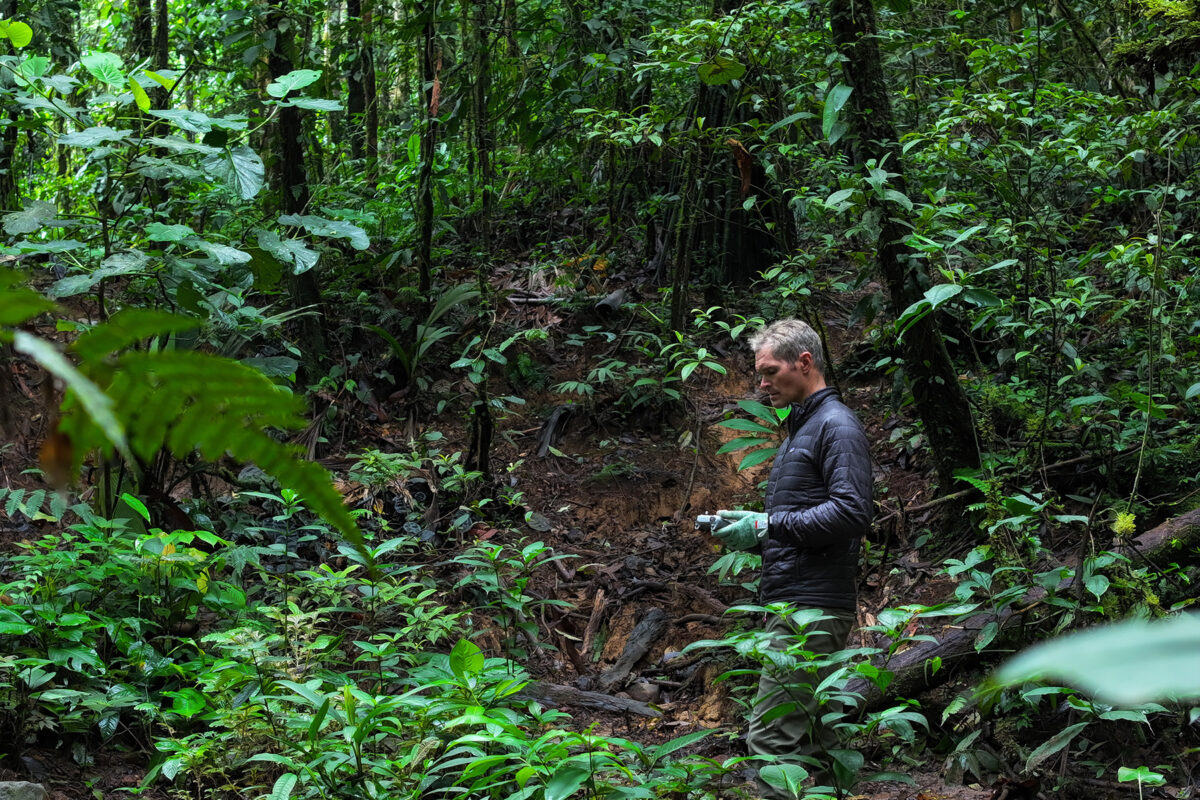- The Biophilia Award for Environmental Communication is a prestigious award granted to professionals and organizations working to improve public understanding of ecological issues.
- The fifth annual Biophilia Award for Environmental Communication has been awarded to Mongabay for its commitment to reporting on issues related to nature and biodiversity, particularly in countries in the Global South.
- Past recipients have included The Guardian, as well as journalists Elizabeth Kolbert, Marlowe Hood, and Matt McGrath.
- Renowned conservation scientist Jane Goodall, who serves on Mongabay’s advisory board, said Mongabay “not only highlights the problems in the world, but also discusses solutions from the ground up” and that it “tells inspiring stories of people fighting and risking their lives as they strive to save wildlife and the environment.”
Mongabay has won the prestigious Biophilia Award for Environmental Communication for its “outstanding track record” in communicating issues related to nature and biodiversity, especially in countries in the Global South.
The Biophilia Award was launched in 2019 by the BBVA Foundation, the charitable arm of one of Spain’s biggest banks, to recognize the work of professionals and organizations working to improve public understanding of ecological issues through the dissemination of scientific knowledge and sharing of new perspectives. The award comes with a cash prize of 100,000 euros (about $106,000).


The evaluation committee praised Mongabay for successfully making “the connection between science and journalism by disseminating research on environmental protection and making studies available under conditions of maximum access.” These achievements have enabled Mongabay to “highlight specific situations or serious environmental problems affecting communities that tend to be overlooked by mainstream news sources,” the committee said in a statement.
Founded in 1999 by U.S. journalist Rhett A. Butler, Mongabay is a nonprofit digital platform that has built up a network of 800 correspondents in 80 countries and publishes original reporting in six languages, including English, Indonesian, Spanish, French, Hindi, and Brazilian Portuguese. Mongabay reports on issues all over the world, but it has a particular focus on tropical regions within Asia and Latin America, which are home to the richest and most endangered biodiversity.


Mongabay currently receives about 4 million visitors per month, and its content, which can be republished free of charge, regularly appears on platforms like The New York Times, The Washington Post and the BBC. Through its news coverage, features and investigations, Mongabay has driven numerous impacts, such as influencing policy decisions in the palm oil industry in Indonesia and increasing transparency and accountability in the global fishing industry.
In addition to publishing global news in English, Mongabay has set up bureaus in Indonesia, India, Brazil and Peru, and is in the process of opening its first news desk in Africa. Mongabay also works to engage with child audiences through the platform Mongabay Kids, and runs fellowship and internship programs for emerging journalists. The Y. Eva Tan Conservation Reporting Fellowship Program, which was launched in 2022, provides opportunities for “journalists from biodiversity hotspots in tropical countries to report on critical environmental issues, gaining valuable training, experience, and credibility that will help them advance their careers in journalism and communications.”


Previous recipients of the Biophilia Award for Environmental Communication include The Guardian, as well as New Yorker staff writer Elizabeth Kolbert, AFP correspondent Marlowe Hood and BBC reporter Matt McGrath.
Butler, who won the 2022 Heinz Award for the Environment for his efforts to advance environmental journalism worldwide, said he believes environmental journalism is increasingly relevant to people’s current lives since “we are all experiencing firsthand the effects of climate change, pollution, or habitat loss.”
“[I]t’s really important for environmental journals to put these impacts in a context that explains why they are happening,” Butler said in a statement to the BBVA Foundation. “We are a translation service between the scientists and their data and what people are observing with their own eyes. And this is of great value both in informing the public and possibly leading them to change their behavior.”


Butler also emphasized that Mongabay is not an advocacy publication, despite its mission to report on nature and planetary challenges.
“Our job is to present information on what’s going on rather than telling people what to do,” Butler said. “But it’s still possible to drive change by focusing your journalism on certain topics that mobilize citizens so they reach out to their political leaders.”
In reference to this award, renowned conservation scientist Jane Goodall, who serves on Mongabay’s advisory board, said, “Mongabay has grown into what I believe to be one of the very best and most widely-read conservation and environmental science sites on the internet. It provides accurate up to date news that focuses primarily on wildlife, forests, oceans, and the conservation sector.
“One of the things that I and others so appreciate is that Mongabay not only highlights the problems in the world, but also discusses solutions from the ground up,” Goodall added. “It tells inspiring stories of people fighting and risking their lives as they strive to save wildlife and the environment.”
